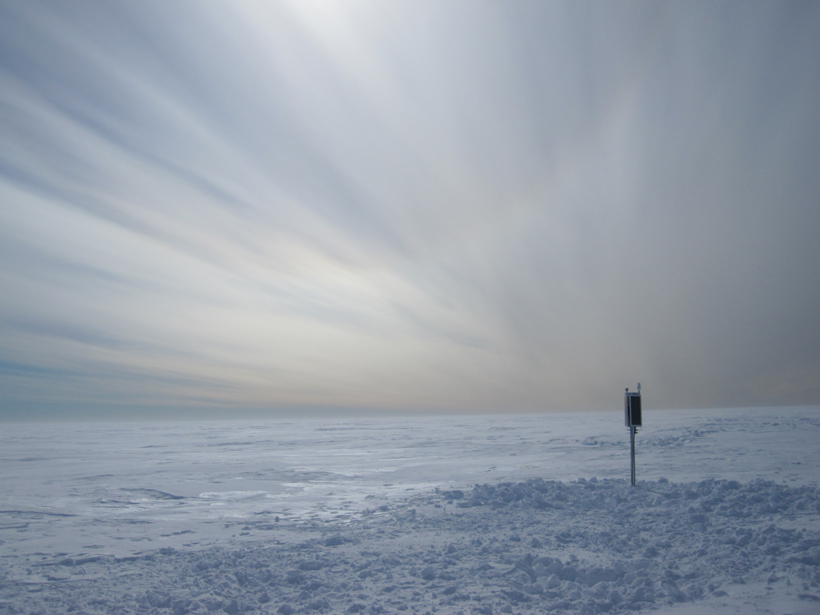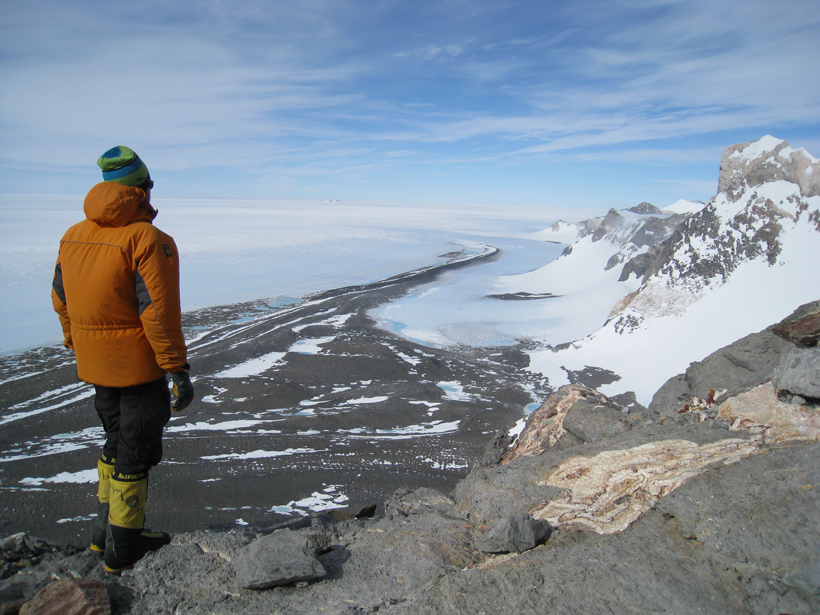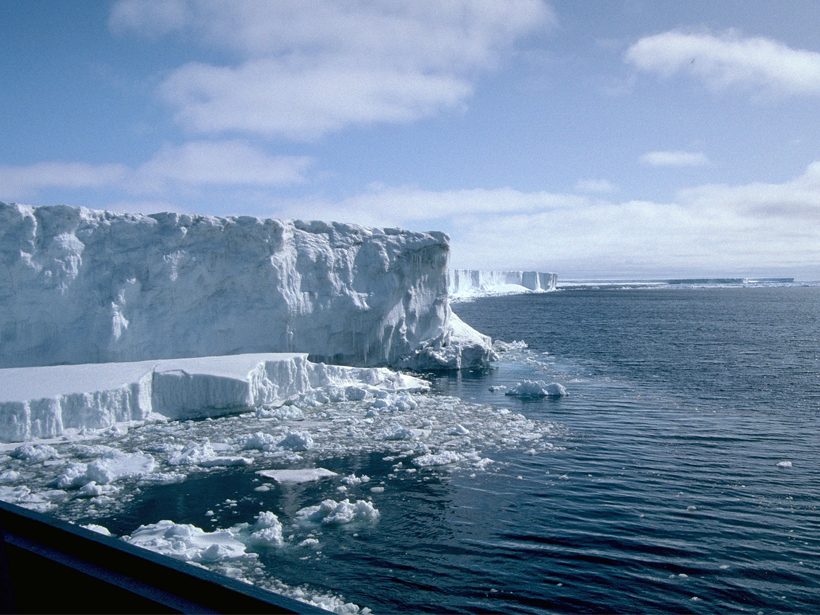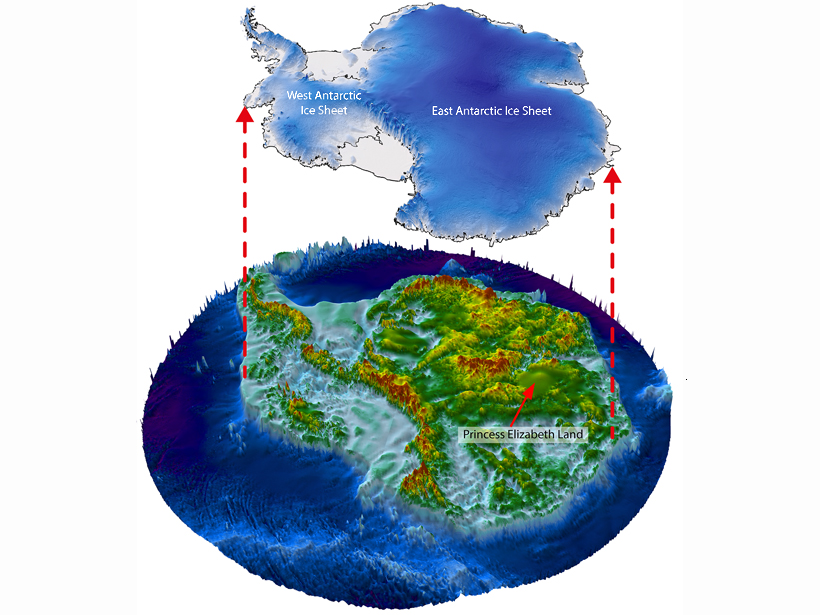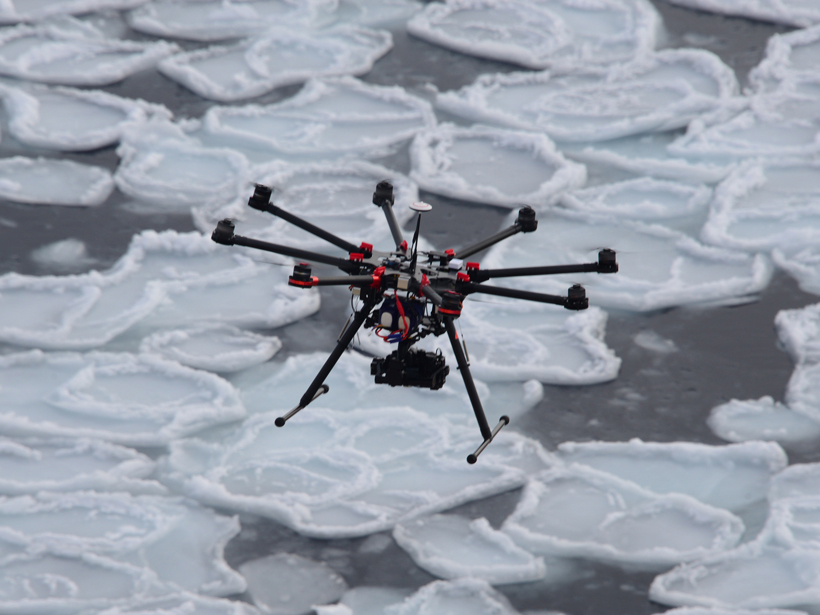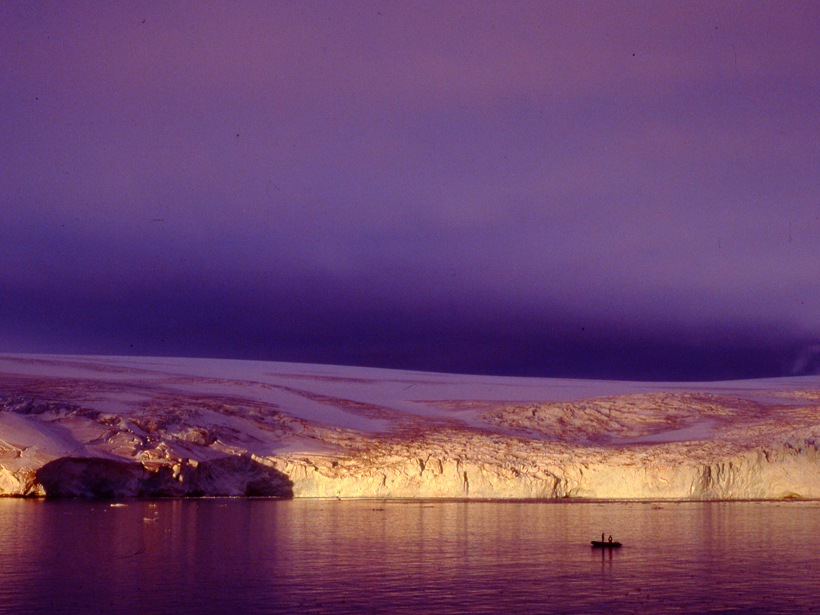Scientists use seismic stations to study ice shelf vibrations generated by ocean waves to better understand their impact on the integrity of the Ross Ice Shelf.
Antarctica
Pleistocene Rocks Tell Tale of Past Ice Sheet Melting
Researchers examine evidence from a past interglacial period to predict sea level rise in the future.
Tracking the Fate of Antarctica's Ice
New, more accurate satellite data provide researchers with ice shelf thickness measurements that will allow for better ice loss monitoring.
Antarctic Meltwater Makes the Ocean Warmer and Fresher
Scientists model how Antarctic meltwater from specific locations could affect the Antarctic Bottom Water, ocean temperatures, and salinity.
Antarctic Ice May Harbor Huge Network of Canyons
Scientists saw hints in satellite data of dramatic geologic features under thousands of meters of ice in a little-probed part of East Antarctica. Now they are using airborne radar to explore further.
Climate Change Drives Increasing Snowfall in Western Antarctica
Using ice core records from West Antarctica, researchers look back at the past 300 years of snowfall over the Amundsen Sea.
Drones in a Cold Climate
As climate change reshapes the Earth's polar regions, scientists turn to drone-mounted cameras to measure sea ice. One expedition found out that flying drones near Antarctica isn't easy.
Antarctic Sediment Plume Disrupts Deep-Water Community
Increased sedimentation from a melting glacier inhibits filter feeders in an Antarctic fjord.
Ice Loss Benefits Adélie Penguins—For Now
New research that may presage effects of climate change on this species looks back 22,000 years, finding robust growth in the East Antarctic population as melting followed the last ice age.
Priorities for Antarctic Research: Glaciers, Genomes, and Cosmic Waves
The next decade of research should focus on the need to understand the changing Antarctic environment and how organisms adapt to it, a high-level report says.

